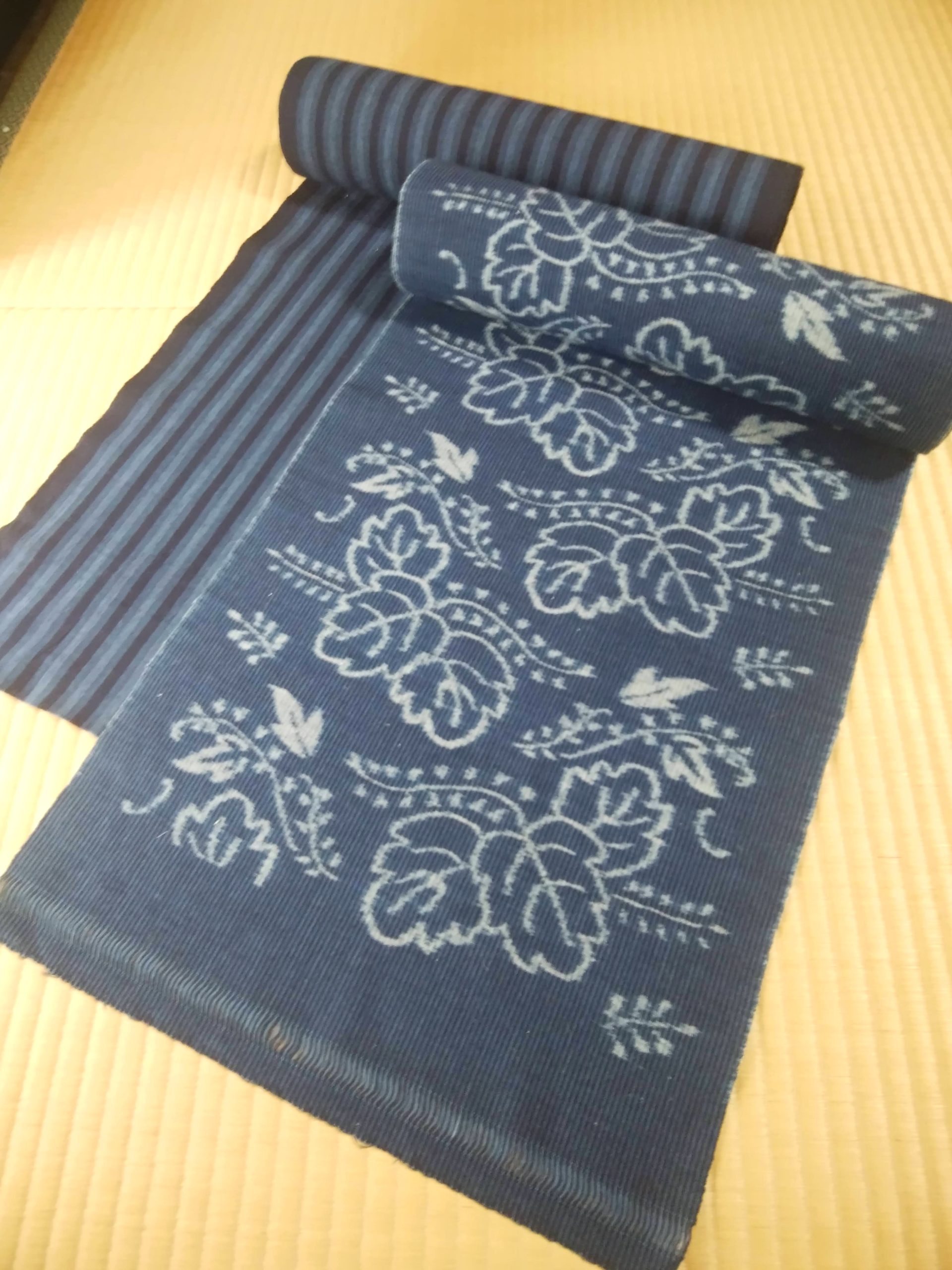弓浜絣
Pronunciation: Yumihama-kasuri
Production area: Yonago City and Sakaiminato City, Tottori Prefecture
Yumihama-kasuri is an indigo-dyed cotton fabric woven on the Yumihama Peninsula, which stretches about 20 kilometers in a graceful bow shape along the coast from Yonago to Sakaiminato. The name “Yumihama” derives from this coastal landform. In the Edo period, cotton cultivation thrived in the area, producing high-quality cotton known as Hakushu-momen, which became a key industry of the Tottori domain. From this, Kasuri weaving developed. In Kasuri, pre-dyed threads (Kasuri-ito) are woven so that indigo-dyed threads form the base fabric while white threads create a variety of patterns. The slightly blurred effect of the white threads against the indigo ground produces a distinctive charm, and Yumihama-kasuri has long been beloved by local people. In 1975, it was designated as an Intangible Cultural Property.
The history of the development of Yumihama Kasuri
Yumihama Kasuri is believed to have been woven since around 1751, when local farm women, alongside their main occupation of cotton weaving, created clothing, bedding, and other household items. The San’in region of Tottori and Shimane prefectures became renowned for Kasuri weaving techniques, including Hirose Kasuri, Yumihama Kasuri, and Kurayoshi Kasuri. Among them, Yumihama Kasuri was particularly close to everyday life, valued by farmers and townspeople alike. It flourished from the Edo through Taisho periods, during which Tottori ranked as the third largest Kasuri-producing area in Japan. Since its designation as an Intangible Cultural Property in 1975, preservation societies and weaving houses have been established to carry on its legacy.
#




















